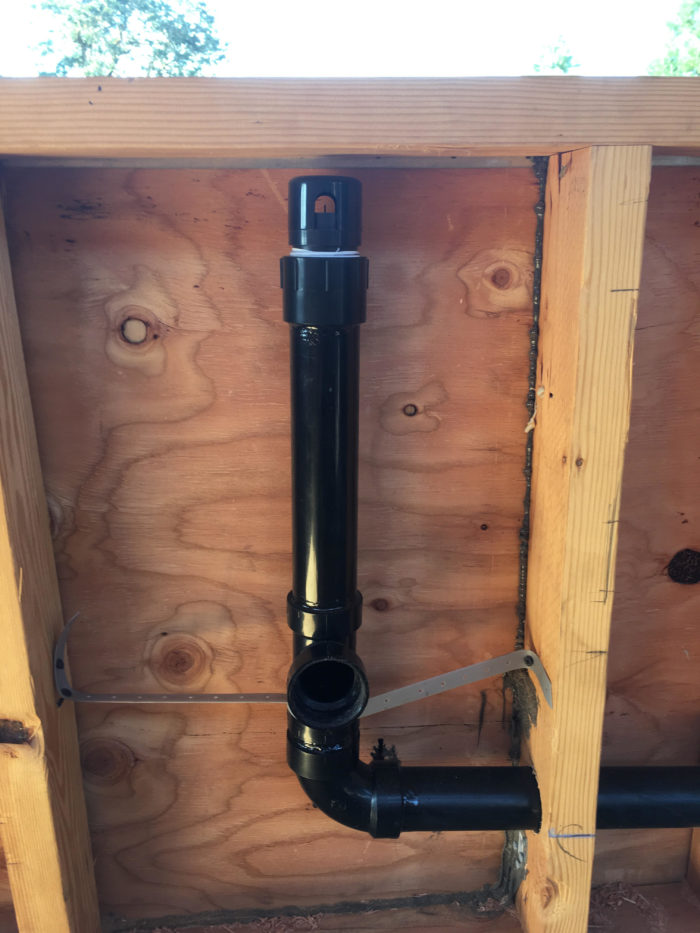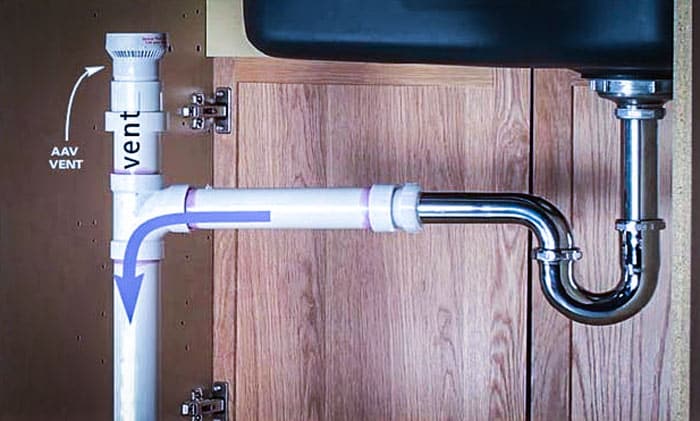The Significance of Adequate Ventilation in Your Home's Plumbing Systems
The Significance of Adequate Ventilation in Your Home's Plumbing Systems
Blog Article
Just how do you actually feel in relation to The Upsides of Proper Ventilation in Plumbing Design?

Correct air flow in plumbing systems is often forgotten, yet it is important for maintaining the performance and safety of your home's plumbing. Air flow aids regulate atmospheric pressure, prevent the accumulation of unsafe gases, and ensure the reliable removal of waste. In this guide, we will check out the value of correct plumbing ventilation, just how it works, and the advantages it brings to your plumbing system.
Recognizing Ventilation in Pipes
Ventilation in pipes refers to the network of pipelines that allow air to move with the drainage system. These vents offer several objectives, including regulating atmospheric pressure within the pipes, preventing sewage system gases from getting in the home, and aiding in the smooth circulation of wastewater.
Exactly How Ventilation Works in Plumbing Systems
Air Pressure Law
Appropriate ventilation preserves balanced air pressure within the pipes system. When water flows via pipes, it displaces air. Without adequate air flow, this variation can create negative pressure, leading to slow drains or siphoning of water from catches, which can trigger unpleasant smells to permeate right into the home.
Avoiding Sewer Gas Build-up
Among the most crucial features of pipes vents is to avoid sewer gases, such as methane and hydrogen sulfide, from accumulating within the home. These gases can position serious wellness dangers and are very flammable. Vent pipelines allow these gases to escape securely outside.
Aiding in Waste Removal
Air flow assists in the reliable removal of wastewater by protecting against airlocks in the drain system. When air can move freely with the vents, it allows water and waste to stream efficiently with the pipes, lowering the threat of clogs and back-ups.
Types of Plumbing Vents
Key Stack Vent
The primary pile air vent, likewise called the air vent stack, is the main air vent in a pipes system. It expands from the primary drain align with the roofing, allowing gases to run away and fresh air to go into the system.
Branch Vent
Branch vents attach to the primary pile air vent and serve private fixtures, such as sinks, toilets, and showers. These vents guarantee that each fixture has ample air flow to operate effectively.
Air Admission Shutoff (AAV).
An Air Admission Valve (AAV) is a one-way valve that enables air to go into the plumbing system without the need for a conventional vent pipeline extending through the roofing system. AAVs are typically utilized in renovations or locations where setting up a standard vent is unwise.
Indications of Poor Ventilation in Pipes.
Slow Draining Fixtures.
If your sinks, bathtubs, or bathrooms are draining slowly, maybe an indicator of inadequate ventilation. Insufficient air flow can create a vacuum cleaner result, making it hard for water to drain pipes appropriately.
Gurgling Sounds.
Gurgling audios originating from drains pipes are commonly a result of air being drawn with water traps as a result of unfavorable stress in the pipes. This is a clear indication of inadequate ventilation.
Undesirable Odors.
Sewer smells inside your home are a red flag that your plumbing system is not correctly aerated. This might suggest that drain gases are not being effectively aired vent outside, resulting in possibly dangerous conditions.
Usual Air Flow Blunders.
Inadequate Vent Sizing.
Using small air vent pipelines can cause bad air flow and pressure inequalities in the system. It's essential to use vents that fulfill the certain demands of your plumbing system.
Improper Vent Placement.
Positioning vents as well far from the components they serve can reduce their effectiveness. Correct placement makes sure that air can flow openly and efficiently via the system.
Ignoring Code Demands.
Building codes supply specific standards for plumbing ventilation. Disregarding these codes can cause a system that fails to work properly and might cause pricey repair work or carcinogen.
Benefits of Appropriate Air Flow.
Boosted System Effectiveness.
Properly aerated plumbing systems operate a lot more efficiently, with less clogs, faster draining, and much less strain on the pipes. This performance extends the lifespan of the pipes system.
Improved Air Top Quality.
By avoiding sewage system gases from entering your home, correct air flow adds to better indoor air high quality, making your living atmosphere healthier and a lot more comfy.
Stopping Water Damages.
Appropriate air flow helps avoid water from being siphoned out of traps, which can result in drain gases entering the home and causing water damage over time.
Steps to Make Certain Appropriate Air Flow.
Consulting Pipes Codes.
Always speak with neighborhood pipes codes when making or changing your pipes system. These codes give the essential standards for appropriate venting and ensure your system meets safety and security requirements.
Routine Assessment and Upkeep.
Routine assessments can assist recognize possible air flow problems before they become major problems. Upkeep tasks, such as cleaning up vent pipes and checking for blockages, are vital for keeping the system in good working order.
Professional Installment.
For new setups or major alterations, it's smart to work with a professional plumbing professional. They have the proficiency to make sure the ventilation system is properly developed and installed according to code.
Final thought.
Correct ventilation is a critical element of any kind of plumbing system, making certain that it works efficiently and safely. By understanding the significance of ventilation, acknowledging the indications of poor air flow, and taking actions to preserve your system, you can protect against costly concerns and secure your home's air top quality.
4 Things You Should Know About Your Plumbing Vents
What Plumbing Vents Are
Also called a vent stack, a plumbing vent is a vertical pipe attached to your drain line that runs through your roof. The plumbing vent pipe, or plumbing air vent, removes gas and odors from your plumbing system and allows fresh air to enter the pipes, helping the water to flow out of the drain pipes.
What Plumbing Vents Do
Plumbing vents have two basic functions. One of which is to allow unpleasant smelling wastewater and sewer gasses to escape your plumbing system instead of entering your home. Plumbing vent pipes are typically located on roofs, away from windows, to ensure the fumes exit the home completely.
The other function of the plumbing vent is to move fresh air into your plumbing system. This helps move water through every plumbing fixture in your house, like toilets and sink drains. Think of the way in which you need to let a little air into the bottle as you pour soda in order to make the drink flow smoothly.
Different Types of Plumbing Vents
True vent: This is the most common vent option. In simplest terms, a true vent is a vertical pipe attached to your drain line that exits through the roof. They often function as the main vent that other fixtures can connect to. Re-vent pipe or auxiliary vent: Attached to the drain line near specific plumbing fixtures, re-vent pipes run up and over to connect to the main vent. Common vent: Two plumbing fixtures installed on opposite sides of a wall are typically tied into the vent stack using something known as a sanitary cross. Wet vent: This venting option operates as a drain pipe and a vent at the same time. Wet vent drainage systems drain water from one fixture while venting the air from another. Although they’ve been used for over 100 years, wet vent systems have only recently been added to the plumbing code in many areas. If you’re planning on installing one in a bathroom remodel, make sure you check your local code prior to construction. Loop vent: For free-standing fixtures like kitchen island sinks, loop vents are ideal. These vent pipes run under the floor, rise from the P-trap, and create a loop inside the cabinet sink. Air admittance valve: An AAV is a one-way mechanical valve typically installed at the site of the plumbing fixture. AAVs allow venting to occur without having to tie into a larger venting system. They’re ideal for venting fixtures where you aren’t able to easily connect to an existing vent system. Common Plumbing Vent Issues
Although vent pipes typically don’t have water flowing through them, they’re still subject to many typical plumbing issues. For example, clogs are one of the most common problems associated with sewer vent pipes. If your vent pipe gets clogged, all of your plumbing fixtures tied into the vent stack will be affected.
A sink with a slow drain that bubbles and gurgles or a strong sewage smell around your toilet are both indicators that your toilet vent pipe is clogged. Because most vent pipes exit through the roof, old leaves, twigs or even a bird’s nest could be clogging the pipe.
Clogs in your vent pipe system cause a buildup of negative pressure, meaning that water won’t be able to flow out of your home very well. It’s similar to putting your finger over the opening of a straw to trap water inside. When you remove your finger, the water is able to flow out of the straw.
If you suspect you have any blockage in your vent, make sure you have a professional come examine the situation. Left unchecked, a blocked air vent can lead to other costly repairs, like leaks and sediment buildup.
Under Pressure
Pipe vents are essential aspects of a home’s plumbing system. Owning a home means learning about all sorts of things you never put much thought into before. But by understanding as much as you can about the important systems of your home, you can keep those budgets intact and those anxiety levels low.
https://www.homeserve.com/en-us/blog/home-improvement/plumbing-vents/

We had been made aware of that article on What Are Plumbing Vents and Why Are They Important? from a friend on a different site. Are you aware of anybody else who is very much interested in the subject? Take a moment to share it. Thank you for going through it.
Click Here Report this page